The Lotus 4 CORE combines speed, agility, and Mountain Series capabilities in a streamlined 28-liter profile. This is the perfect companion for your next photographic adventure where you need to remain agile. When paired with a removable f-stop ICU, the Lotus 4 CORE can safely store your key camera gear, with the flexibility to pack other travel essentials. The DuraDiamond® exterior fabric with Hypalon™ base keeps your gear safe and dry. The internal aluminum frame and multi-point suspension system distributes weight evenly for comfort while on the move. Integrated compression straps and multiple attachment points allow convenient external transport of outdoor and photography gear.
The f-stop LOTUS 32L Camera Backpack is designed to meet the demands of professional photographers and outdoor enthusiasts alike. With a perfect balance of functionality, durability, and comfort, this backpack is engineered to protect your gear and support your journey, whether you're navigating rugged terrains or urban environments.
The LOTUS 32L is compatible and recommended for use with the following f-stop Internal Camera Units (ICUs): 'Micro Tiny', 'Shallow Small', 'Shallow Medium', 'Slope Medium' and the 'Pro Small'. The 'Pro Large' is also compatible but not recommended.

My name is Tanner Boley and for the past five years I have been traveling around the world working on video projects with international Non-Governmental Organizations to highlight the work they do. My travels have taken me to almost every continent and I have had the privilege to document some amazing people and the incredible work they do around the world.
Most recently, I traveled to Ukarumpa, Papua New Guinea. I worked with the Summer Institute of Linguistics as they handed off a translated copy of the New Testament to a native tribe in Papua New Guinea. The translation took over 42 years to complete.
Words and photos by Tanner Boley

Getting to Ukarumpa, Papua New Guinea was no easy feat. It started with a flight from Bend, Oregon to Sydney, Australia. I boarded another flight in Sydney that took me to Port Moresby, Papua New Guinea.

From there a smaller plane took me deeper into the interior of Papua New Guinea. After landing in Goroka, I jumped in a small truck and drove three hours deeper into the jungle. We pulled up to a grass runway where a small bush plane was waiting to fly me an hour deeper into the jungle.

After landing and dodging the dogs that were sleeping on the runway, I boarded a helicopter that flew me up to a high mountain pass where the village was gathering for the handoff ceremony.

My f-stop Lotus pack took a beating on this trip but kept all of my equipment safe and secure. I carried a small Sony PXW-X70 to record the ceremony and a Sony a6500 with an 18-105mm lens to photograph the handoff of the New Testament.

My pack endured a torrential downpour, 80-percent humidity, and a large earthquake that hit the interior of the Island. The whole time, my equipment was dry and secure, even after bouncing out of the back of a pickup truck on a jungle road. This year my f-stop Lotus UL will be traveling to Jordan, Turkey, Israel, Thailand, and Costa Rica with me.
"We Are f-stop" is for all f-stop users to share their stories from the field, from small daily adventures to epic travels. Contact us with your story on Facebook or drop us an email to [email protected] and let us know where your photography takes you and your f-stop pack!
SHOP ALL GEAR MORE WE ARE f-stop


©2022 F-stop

Here at f-stop we are always happy to hear stories from our users, whether they are customers or Staff Pro team members. "We Are f-stop" is a new series of stories from all kinds of f-stop users, covering the ups and downs of life in the field. We are kicking off with this testimonial from customer Katie M. Zaharkin of Nature's Lenz Photography who got in touch with her story of what must be close to every photographer's worst nightmare - involving a car and a camera bag. This story had a happy ending though, so Katie was able to keep on shooting the images below. We'll hand over to Katie from here:
All photos copyright Katie M. Zaharkin / Natures Lenz Photography
Luckily this was the only casualty!
"I am not one for writing reviews. I’d rather focus on posting photos or better yet, going out and taking photos. But every once and awhile I come across something I really like and I just have to share it.
A few weeks ago my husband and I took a trip to the Adirondack Mountains High Peaks Wilderness area here in New York for the purpose of photographing fall scenes and to do a little hiking. We had pulled over on the side of the road at a trail head, put our gear on and started out. A few hundred yards into the hike we realized we may not have started at the right trail head. We went back to the car and I took off my camera pack and leaned it up against the side of the car while we looked at the cars GPS for another trail head location.
After 10 min of studying maps we pulled the doors shut and decided to take off down the road. Upon backing out of the trail head parking lot we felt a thump. My heart instantly sank as I realized I had forgotten about my camera bag and my husband had just ran it over with his SUV! I didn't even want to look. It was loaded with about $2000 worth of camera gear!
Once I mustered up the guts to look inside I slowly pulled out lens by lens and realized that out of everything in the bag, only one lens had been broken. That's ONE lens. One lens out of 2 cameras and 5 other lenses. Oddly enough, it was the lens that was packed right smack in the middle of my camera bag. I still feel like a complete idiot for forgetting my my bag and allowing this all to happen. But sh*t happens and I owe it all to my camera bag for protecting my gear in even the most unsuspecting situations!
After a few weeks of trying out different camera bags from all different companies, I finally decided to settle with an F-Stop Lotus. The bag was more than I wanted to spend initially, but now that this has happened, it was worth every penny and I am so glad I went for it!
Below are pics I was able to take a few hours later with the same camera that was in the bag when it was run over along with a pic of a smashed lens that just goes to show you should never run over your camera bag!"



Katie M. Zaharkin out and about with her f-stop Lotus pack - and still doing so luckily with most of gear intact!
To see more of Katie's work, check out her website and Facebook page:
https://www.facebook.com/natureslenzphoto


in, showing an image of itself, both unique and bewitching.
"We Are f-stop" is for all f-stop users to share their stories from the field, from small daily adventures to epic travels. Contact us with your story on Facebook or drop us an email to [email protected] and let us know where your photography takes you and your f-stop pack!
SHOP ALL GEAR MORE WE ARE f-stop


©2022 F-stop

Working in the industry for over 10 years, Emily switched gears and entered the academic world as an assistant professor of Digital Media at Utah Valley University. She’s hoping to inspire the next generation of Digital Media students with her escapades. When she’s not in the classroom, she’s plotting and planning new projects and expeditions that continue to take her around the world. Emily has been able to combine her love of video and photography with travel and in 2018 she finished her personal goal of visiting all seven continents. You can follow her on Instagram @highlandhedrick or the Instant Portrait Project @instantportraitproject
Words and images by Emily Hedrick

Cameras and lenses. Check. Extra batteries. Check, check. Instant film camera. Check?
I had no idea that a last minute addition to our gear list would launch in to a new and exciting side project. I’m a professor at Utah Valley University in the Digital Media Department. I had just finished my first year of teaching full time at my alma mater when I was preparing to take a small group of students to Namibia, Africa to work on The Untold: Namibian Women’s Stories Project.
The Untold Project is a three-year endeavor to capture women’s stories from all twelve ethnic groups in Namibia. There has never been a comprehensive research project about Namibian women by women. My mentor professor Mike Harper began the collaboration project in 2017 with journalism professor Emily Brown from the Namibia University of Science and Technology (NUST). I took over the Utah Valley University (UVU) side from Mike for the last two years of the project. The NUST team will be conducting the interviews, while UVU is capturing the stories.
As our UVU team began organizing our gear for the interviews, our f-stop Loka UL and Ajna packs had to contain our individual mobile studios. We had to pack lightly but efficiently to make sure we capture the quality we needed. We brought Sony A7III’s and an A6400 with all the accompanying lenses, batteries, filters, and accessories. A last minute addition was the FujiFilm SQ6 Instax camera, which was definitely the oddball of the group!

Lotus carrying all the essentials in the ghost town of Kolmanskop
Located on the Atlantic coast and was once a part of South Africa, Namibia is a desert country that houses both the Namib with its giant sand dunes and the dry Kalahari. The landscapes are surreal and sparse with an occasional oryx or giraffe roaming the bush.
Interviews with the women didn’t begin for another week which afforded us an opportunity to travel to various sites around the country. As a group of budding photographers we decided to go to the ghost town of Kolmanskop near Luderitz. We were also in some of the best dark sky country in the world and we couldn’t pass up an opportunity to drive out to the Quiver Tree Forest and photograph the Milky Way.

Night sky at the Quiver Tree Forest with light pollution from nearby Keetmanshoop.
The following week the team traveled west to the coastal town of Swakopmund, we had planned to do interviews in an informal settlement on the outskirts of town. An informal settlement is essentially a squatter’s camp. The houses were all part of a network of corrugated metal huts with outhouses and water spigots on each block. It’s an alarmingly high concentration of people in impoverished conditions.
When the NUST van pulled in and the team piled out, our presence generated a lot of interest by the community. As an icebreaker, Emily Brown suggested that I take a picture of one of the mothers. When I handed her the photo, she gave me an expression that seemed to say, “Okay why did you give me a blank white piece of plastic paper?” I didn’t speak Afrikaans and trying to explain with hand gestures that an image will appear didn’t translate, but it did buy me time as her image magically appeared. And that’s what it was: magic.
Soon other mothers wanted photos of their babies and children. Snap, snap. More kids came from out of nowhere to get their photos taken too. Picture snap after picture snap. I had only brought 10 packs of film (or 100 instant film exposures) to last the entire trip. I thought 100 exposures would be plenty of film for the three-week trip. Oh, how wrong I was!

Swakopmund children and their photos. (Photo: Brandon Leavitt)
Everyone held their photos gently; they treasured the image and protected it from the dust. When I spoke to Emily Brown about it later, she said that many of these kids will never have a physical photo of themselves in their childhood. For them, a photo is a luxury item. In an age of digital abundance and selfie-taking in America, for these children and youth, an instant photo isn’t a novelty, it’s a precious keepsake.
Our next set of interviews took us to the eastern border near Botswana to meet with the San people: a kind, beautiful ethnic group that has unfortunately been marginalized in Namibia. We had traveled to another settlement near the town of Tsumkwe. Breaking the ice once more, I pulled out the Instax camera. Again, confusion and disappointment when I took the first (seemingly blank) image! That is until…

A portrait being revealed. (Photo by: Brandon Leavitt)
Soon the colors began to appear, and the image of the San mother developed before their eyes. Smiles erupted as the instant film worked its magic and created a small portrait. Soon there was a line of mothers and children all wanting their photos to be taken too. Cartridge after cartridge I snapped away at the growing congregation of adults and children.
Me (Emily Hedrick) handing out photos. (Photo by: Kellie Leavitt)
The most heartwarming moment was when the matriarch of the settlement was being interviewed and she asked if she could get her photo taken. I wanted to take her photo before because of the beautiful vibrant colors that she was wearing, but I couldn’t understand her native click language. When she asked for a photo I was able to take the last cartridge of film out and take her photo. But not before I accidentally bumped the button and took a picture of my shoes. Ugh, 8 photos left!

Matriarch and her portrait.
The matriarch had poor eyesight, but as the photo developed, her portrait ended up being the most vibrant one. The film clearly showed off the colors of her headwear and clothing. Hidden beneath her sash was a little satchel where she carried her most important valuables. Everything was inside her satchel was in pristine condition: ID card, wallet, and other mementos neatly stored inside and never brandished in the dusty settlement. After showing off her own photo, she tucked it carefully away into her satchel and gently hid it back away in her sash.
Emily Brown leaned over to me as the matriarch was putting away her photo, “This is something she will hold on to for the rest of her life.” A photo. A simple instant photo was the best tangible gift we could give. It was in that moment that I knew I had to do something much, much more.

Little boy and his portrait. (Photo by: Brandon Leavitt)
After we wrapped up our interviews and made our way back home to Utah, there was still so much work on the Women’s Project we had to do, but I couldn’t shake this idea about doing more instant film portraits for people. There is no shortage of international projects our university is doing and this idea could expand it to many more areas around the world. I had to do something.
I began working with UVU on extending the project to the community. UVU was 100% supportive on setting up a crowdsourced webpage letting anyone donate to the newly created Instant Portrait Project through UVU’s website. The project launched on September 6th and all proceeds will go towards buying a second camera and as much instant film we can carry with us. I think I’ll be upgrading to the Ajna backpack to get 8 more liters of space for instant film!

Photo by: Kellie Leavitt
The Instant Portrait Project is there to give a record of a moment in time in a person’s life. It is a keepsake that can be held on for many years to come.
We aim to raise $500 to get us started and plan to do subsequent fundraising as the project expands to other areas around the world.
The Instant Portrait Project: http://c-fund.us/mye
"We Are f-stop" is for all f-stop users to share their stories from the field, from small daily adventures to epic travels. Contact us with your story on Facebook or drop us an email to [email protected] and let us know where your photography takes you and your f-stop pack!
SHOP ALL GEAR MORE WE ARE f-stop


©2022 F-stop

A well crafted timelapse can capture the beauty of a location. f-stop customer, Mattia Bicchi is a professional timelapse and hyperlapse photographer and filmmaker from Italy. He has been living in London for the past seven years, creating timelapse pieces for film productions big and small, for clients inlcuding the BBC, Ford, Virgin Atlantic, and Mulberry. This summer he visited the Faroe Islands with his wife, and he got in touch to share these images and also some advice on what he used to shoot them.
Words and photos by Mattia Bicchi:

I recently decided to leave the UK and travel for a year with my wife, to make timelapse for stock (Getty Images) and to create short films of the places we are visiting. This summer we spend one week in the Faroe Islands, we did not know what to expect. Sure we had seen pictures and videos of the Faroe Islands before, but being there and experiencing the raw beauty of this unique country through our very own eyes was incredible.

In the Faroe islands we stayed in a beautiful Airbnb in the town of Saltangará and went around the island with a car we rented at the airport.
We carried all our gear on a Black Loka and an Orange Lotus, which in my opinion are the most versatile and comfortable photography back bag in the market at the moment, they worked perfectly in this environment. Everyday we drove and hiked in different locations and each of one was just breathtaking.





To make the 8K Timelapse I use a Sony A7rII and few Canon Lenses. I create the cinematic movement with the 3 axis 1.5m Dynamic Perception Stage One and R, which was hanging on a 200m cliff to get an amazing shoot of the iconic Lake Leitisvatn.
Here’s the link to the final 8K TimeLapse of the Faroe Islands on my YouTube
You may find more of Mattia's work on his web site, Facebook and Instagram. nd.
"We Are f-stop" is for all f-stop users to share their stories from the field, from small daily adventures to epic travels. Contact us with your story on Facebook or drop us an email to [email protected] and let us know where your photography takes you and your f-stop pack!
SHOP ALL GEAR MORE WE ARE f-stop


©2022 F-stop

f-stop Ambassador Agustin Munoz has been friends with pro BMX rider Kenneth Tencio since he was young. As an action sports and adventure photographer, it helps when your childhood friends become world-class BMX atheletes, but this doesn't usually happen when you are growing up in Costa Rica. In this We Are f-stop story, Agustin takes us behind the scenes of shooting BMX in the jungle, and how he sized down to a more compact mirrorless set up for shooting the action...
Words: Agustin Munoz
This is a video about Kenneth Tencio, who has been growing as a bmx pro rider and is now a Red Bull athlete. Here in Costa Rica, there are no BMX parks like this, so Kenneth decide to build his own, welding and building it with his own hands. Kenneth trains at his self-built "10-cio park" and that dedication has brought results. Last year he podiumed four times, including 2nd place at the biggest BMX event in the world in China. I have personally known Kenneth since a very young age, and we have shared a lot of very good times creating projects and photoshoots together, and i feel very proud of him and what he has achieved.
Agustin Munoz BMX project from f-stop || Gear on Vimeo.


For this video I was using Fuji X-T3 and X-H1. Those cameras have the ability to record at 120fps, which allows me to play with speed reamp effects. Also I am able to record on F-LOG, a format that makes the image flat with a lot of information on shadows and highlights, so later on in editing i can use different type of 'LUTS' for more options with color grading. These cameras also have a very accurate and fast focus tracking on video, something that lets me work with wide-open apertures without having focus issues. The lenses I have been using are; Fujinon 8-16mm f2.8, 18-55mm, 56mm f1.2 and for the very close up a 200mm f2.0. Most of the clips where shot with the DJI ronin S stabilizer. For the drone shots, I have been loving using the DJI Mavic pro 2.
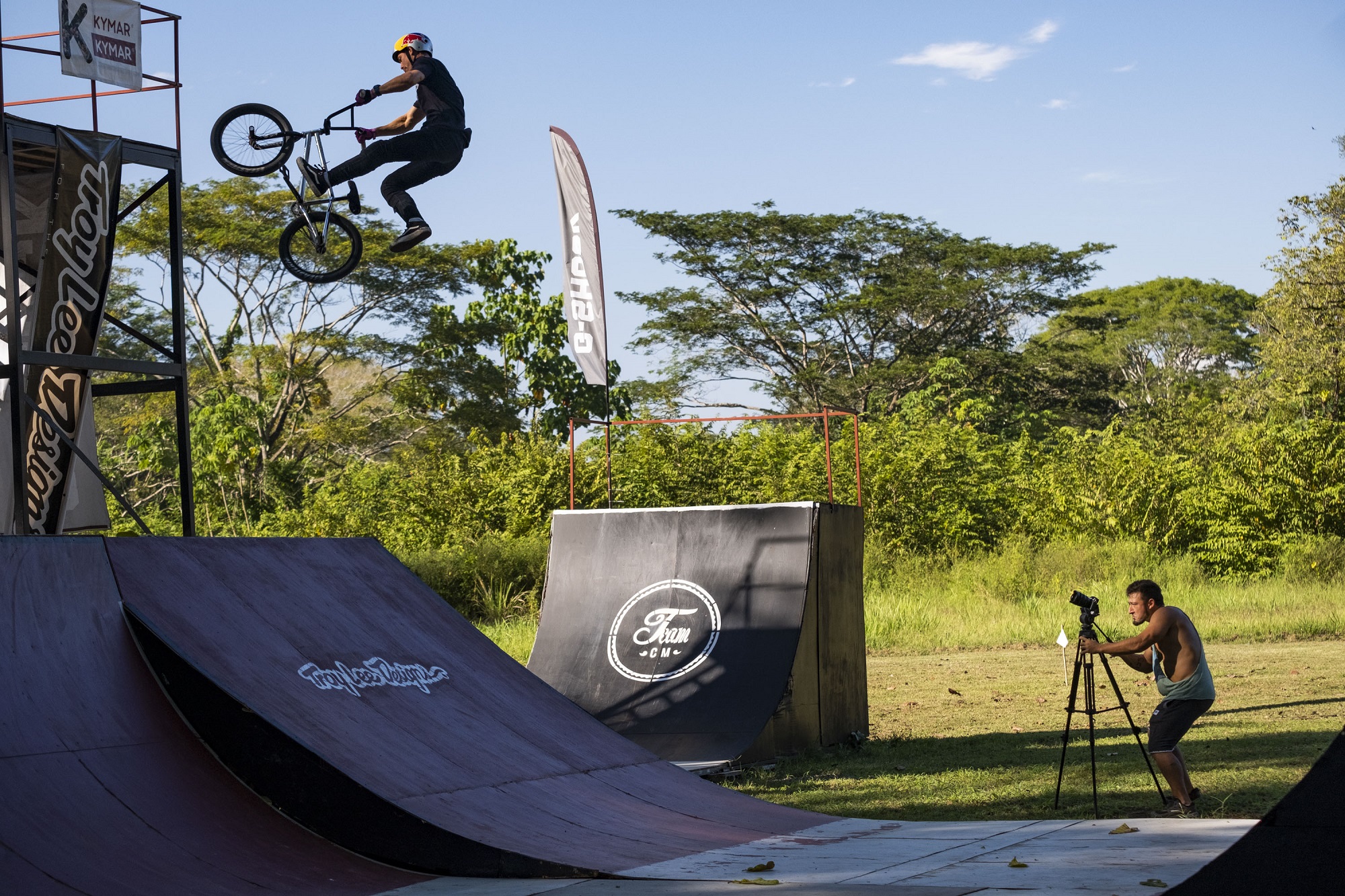
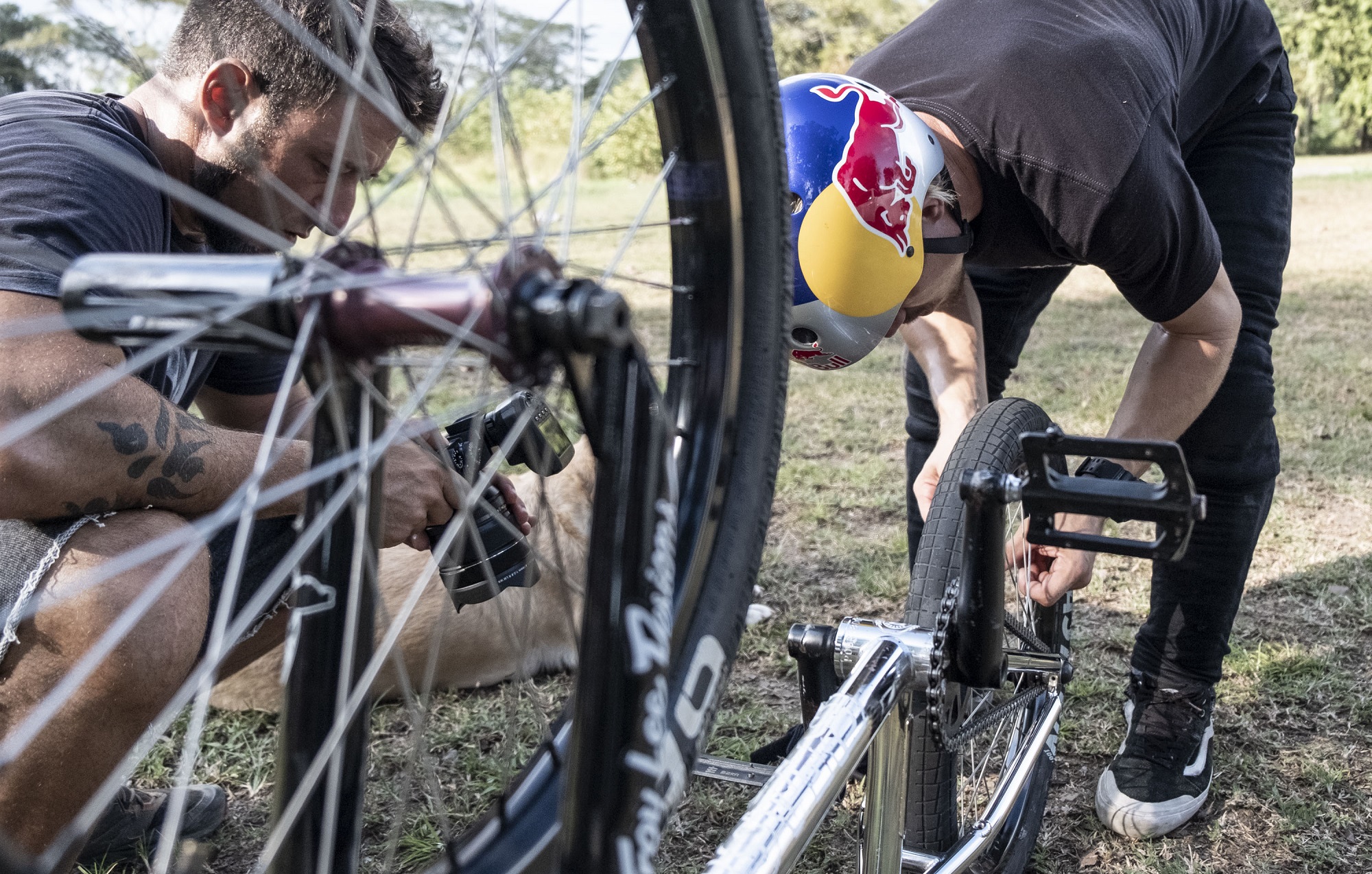
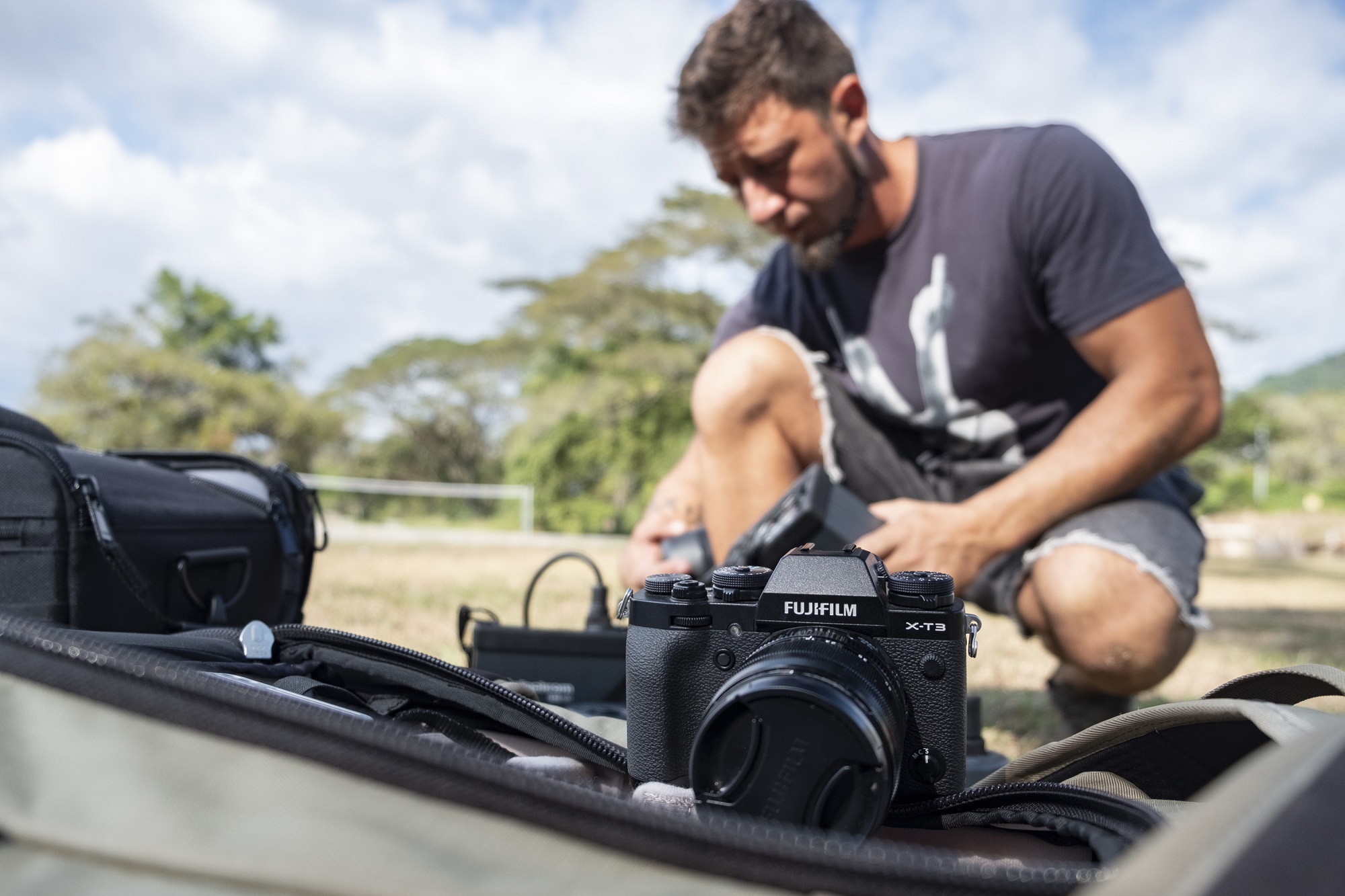

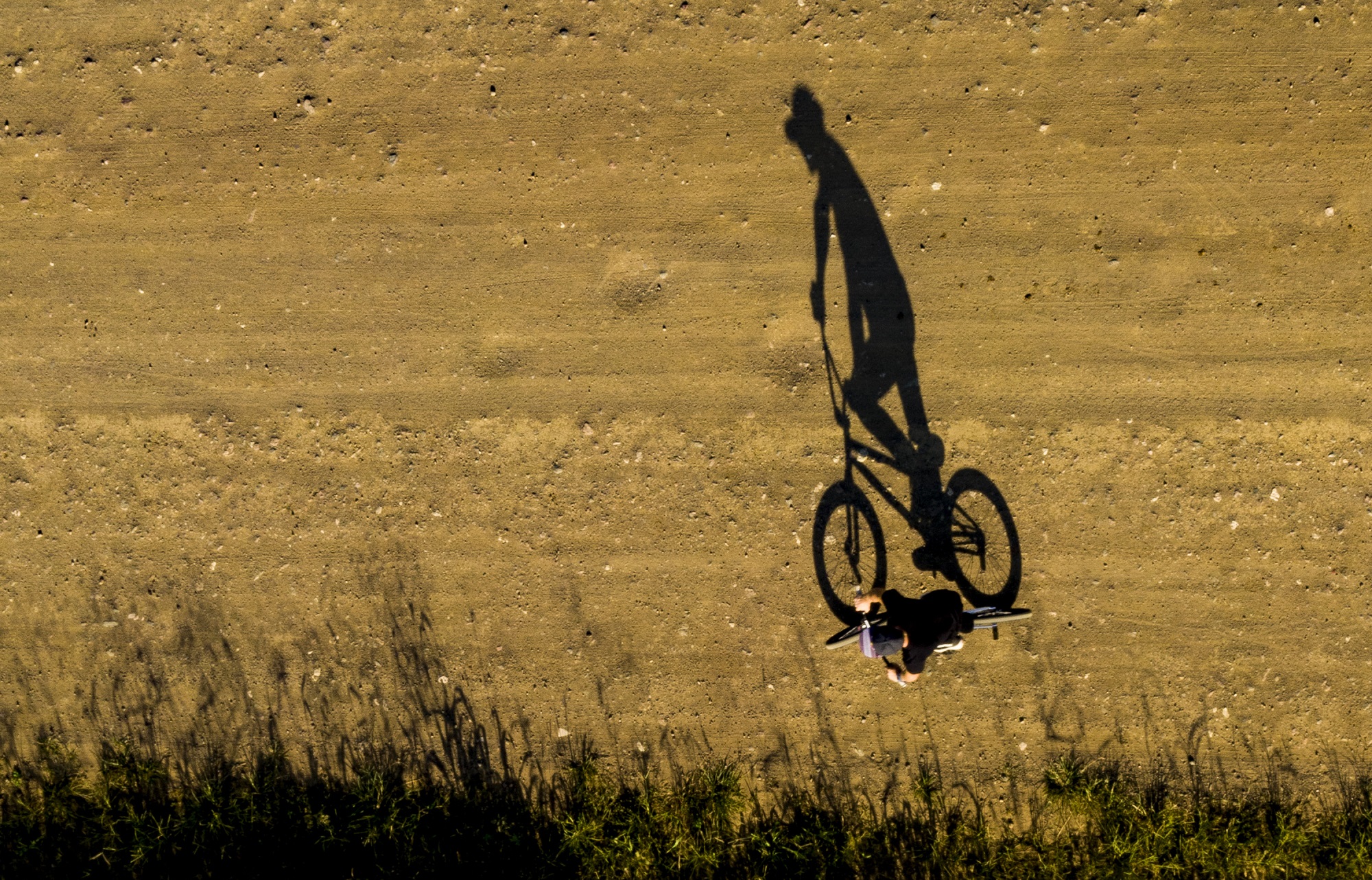
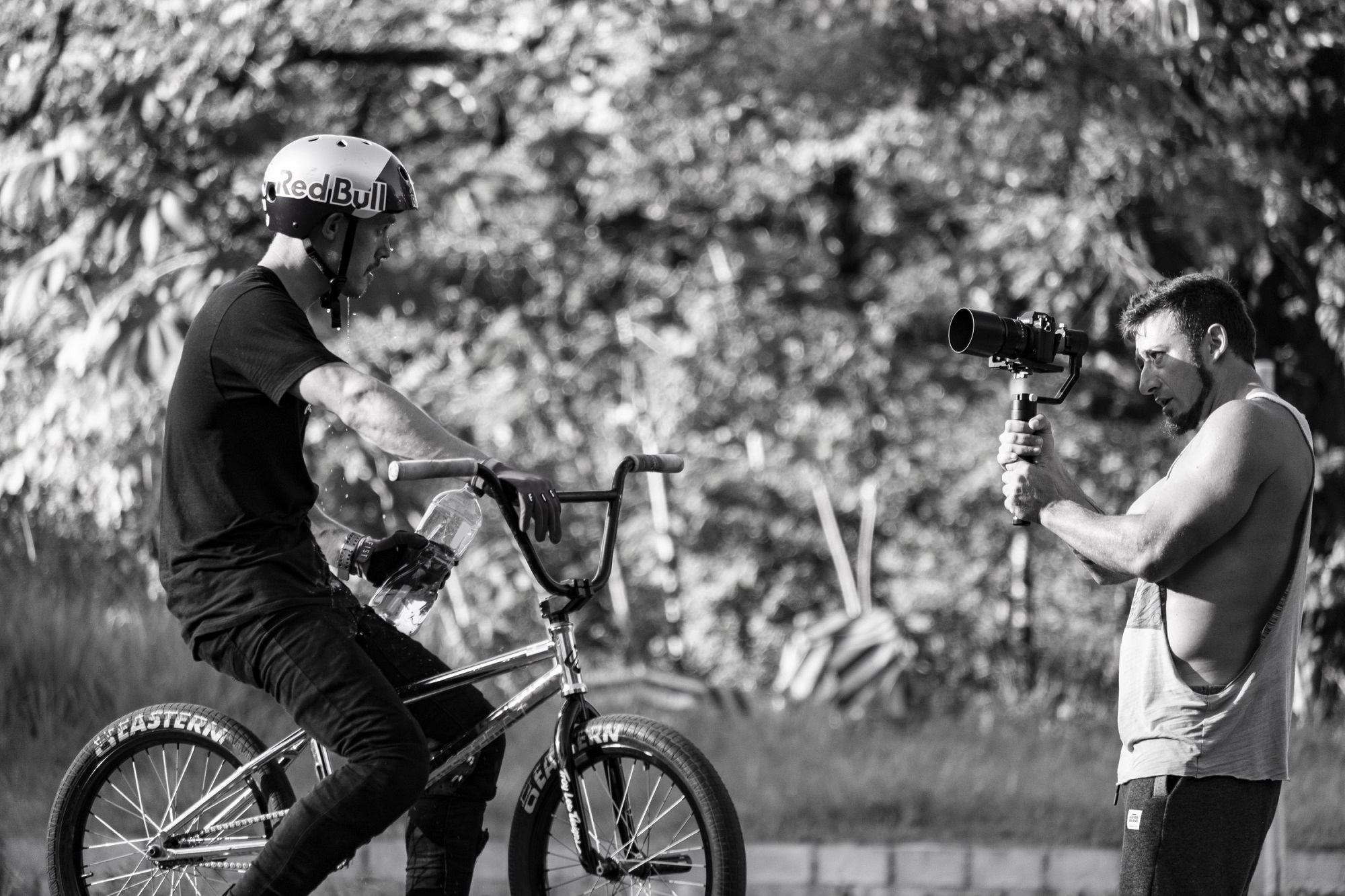
I used to use the Tilopa when i using my Canon set up, but since i move to the the Fuji system, the Lotus is more than enough to carry all I need for all kind of photoshoots.
I like to put my 2 camera bodies and all my lenses in the main compartments of the ICU, then carry the drone sitting on top of the large ICU, in the space between the ICU and the top lid. In carry an f-stop Accessory Pouch filled with extra batteries, camera charger and sensor cleaner tools - all the small things you can't forget - which fits just right in in the side pockets.


For this video, f-stop Ambassador Agustin Munoz used the Lotus, with a Large Pro ICU and the Medium Accessory Pouch.



"We Are f-stop" is for all f-stop users to share their stories from the field, from small daily adventures to epic travels. Contact us with your story on Facebook or drop us an email to [email protected] and let us know where your photography takes you and your f-stop pack!
SHOP ALL GEAR MORE WE ARE f-stop


©2022 F-stop

Michal Krause has been a photographer for almost 20 years and currently focuses mainly on wildlife photography. His passion has taken him to four continents and numerous biotopes ranging from a tropical rainforest to African savanna and temperate forest to mountains and Arctic plains. He says the cold north is a matter of the heart to him and likes to go back to the Arctic wilderness. Michal’s photographs have been honored in several contests including Czech Press Photo, Wildlife Photo Contest, and Nature’s Best Windland Smith Rice Awards, and he is proud Fujifilm X-Photographer.
Michal has authored several hundred educational articles and three successful e-books on postproduction, gives regular lectures, and runs individual photography workshops. Last but not least, he is the co-founder of the Czech Nature Photo contest and has chaired its jury three times.
words and images by Michal Krause

The cold north nature is one of my favorite destinations for wildlife photography, and I wanted to set out for its distinctive representative, the muskox, a long time ago. In the fall of 2019, I had the opportunity to visit the Dovrefjell-Sunndalsfjell National Park for a single day, and right after my first encounter with these amazing animals, it was clear to me that I have to return here again, preferably in the winter when the surrounding mountains are covered in snow. Half a year later, my friends Mirek Daněk and Peter Delaney and I boarded a plane for Oslo to photograph the uncrowned king of the alpine tundra.
It is easy to get to the Dovrefjell mountains, which gave the park its name — you can travel comfortably around Norway by car or train. The real challenges of such a trip are the conditions in the park. In March, the winter begins to subside slowly, but during our visit, the temperatures were still falling to 12 °C below zero and the wind-chill effect reduced subjective temperature even more. The area of the park that we chose as our destination, with an altitude of up to 1600 meters above sea level, was still covered with snow and it was only possible to walk using snowshoes. For someone like me who lives in Central Europe where winter has been low in the snow in the last few years, snowshoeing is definitely not the most natural way to move. Of course, walking on snowshoes is not difficult, but it involves different muscles which started to ache after a few days of hiking. The nature of the snow didn’t help much — even wide snowshoes were sinking deep sometimes.


I'm used to the fact that you can't be sure of almost anything when photographing wildlife, but when half of our stay passed, we walked dozens of kilometers in quite difficult conditions, and apart from a few older tracks we have not yet seen single muskox’s hair, it was hard not to be nervous. So we decided to go to another part of the park, where I met muskoxen during my first visit. Although they are relatively large animals with dark fur, it is not always easy to spot them from a distance, even using binoculars. I don't count how many times I've almost started to rejoice, only to find out after a while that I'm looking at the rock, which resembles muskox in shape and color.
However, this time, we had good luck — something in distance attracted my attention and after a short while there was no doubt that I found a small group of animals. And indeed, after another hour and a half of walking, we could finally photograph three muskox bulls that were resting and looking for food on a flat ridge. They allowed us to spend the whole afternoon around and nature rewarded us for our efforts with changing weather, thanks to which I captured a series of quite different shots in a relatively short time. But that's exactly what wildlife photography is about — almost everything is out of your control and it often takes some effort to get a reward, but it's always worth it. Yet, this time, another unexpected circumstance occurred, which subsequently affected the lives of us all. The next day we found out that Peter's flight from Prague to Paris, from where he was to continue to South Africa, was canceled due to COVID-19, so instead of another two days of shooting, we had to quickly decide how to help him to get home. This accelerated our departure — we found an earlier flight for Peter from Oslo and Mirek and I returned to the Czech Republic just two days before our government closed the border for weeks.

This time, we were close to returning without a single photo. It took me a long time to accept it as an integral part of my adventures, but today I enjoy it. In my opinion, the element of uncertainty together with invested effort brings a far greater joy of success. And if I don’t succeed? Time spent in nature is a reward in itself. One successful photographer told me once: “Be focused, but stay flexible”. I translated it into more specific advice: “Keep going, even if things go bad, but don't get annoyed and enjoy what is around you“. It’s probably one of the most important pieces of advice I've ever received in my career.
Northern nature is a perfect place, where I don't have to worry about whether I reach my goal. Just being here is a great experience for me and I will definitely continue to explore it with my camera. You can find photos from my other trips to Norway or Svalbard and many other locations.

Gear used during this story:
You can find Michal's work on Instagram and Facebook
"We Are f-stop" is for all f-stop users to share their stories from the field, from small daily adventures to epic travels. Contact us with your story on Facebook or drop us an email to [email protected] and let us know where your photography takes you and your f-stop pack!
SHOP ALL GEAR MORE WE ARE f-stop


©2022 F-stop

Jethro Kiernan is a photographer and Mountain Leader based in North Wales who specializes in mountain, outdoor adventure, and climbing photography. His photography started 30 years ago in the days of Velvia and Kodachrome, and after an interlude of a few years to raise a family, his passion for photography reignited after his kids started becoming mini-adventurers too!
Photography in the mountains for him is about capturing the relationship between weather and light, and the moments of transition from night to day, bad weather to clear. This usually means starting or finishing in the dark and being optimistic about a break in the weather. It’s also about finding the opportunities in the busy schedule of daily life, and finding the local opportunities for adventure closer to home in North Wales.
Words and photos by Jethro Kiernan:

The Snowdonia Photographs are a typical mid-week trip to the hills, solo if no one is available and either shooting early and back down for lunch or a late start allowing me to fit in my other work and family into the day.
It usually starts the night before, with a look at the mountain, weather forecast and packing the bag, checking batteries and camera settings and getting the coffee ground and the clothes out - in the kitchen so minimum disturbance when I leave the house!

On this day the clouds rolled in on the way in but enough hints of blue were there to be optimistic and push on to the ridge (Crib Y Ddysgl) I had planned for.
Going Solo often means placing you in the picture if you want a figure in the landscape, but this places a lot less flexibility on the process especially with a tripod on a windy ridge.
A cold hour was spent on the ridge getting a couple of atmosphere shots whilst the rising sun teased me hiding behind the clouds. Then finally a twenty-minute break in the clouds allowed me to get the picture.
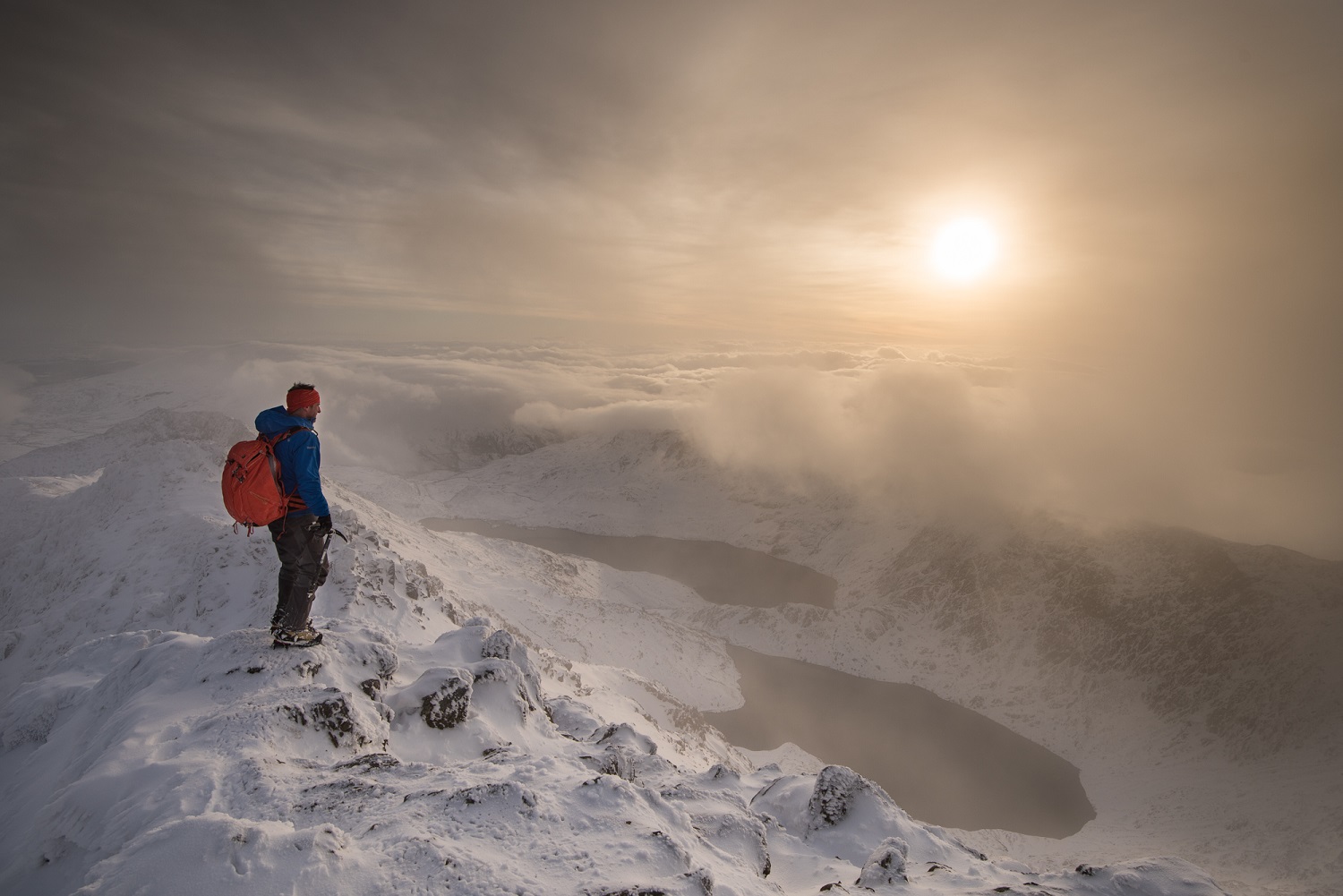
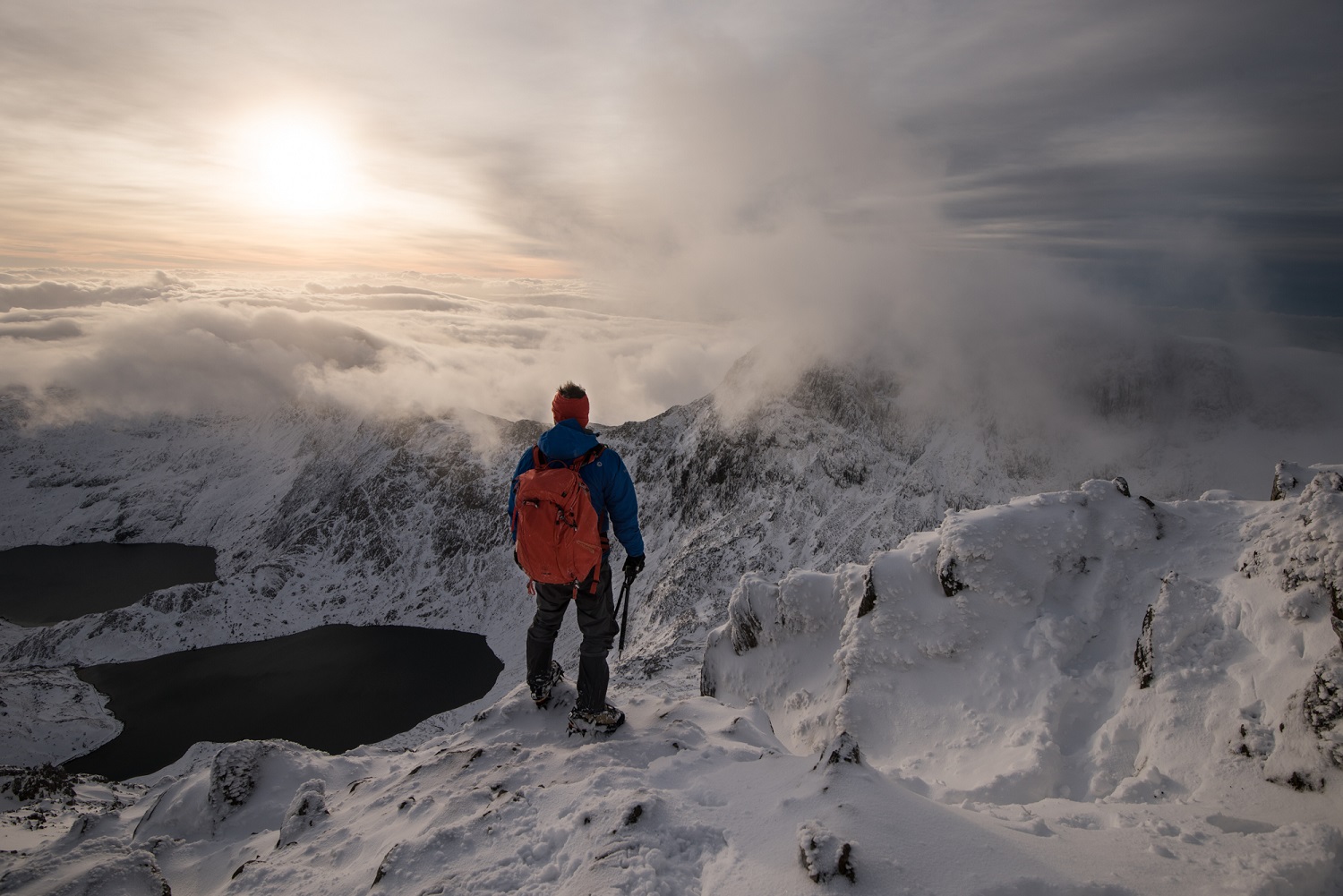
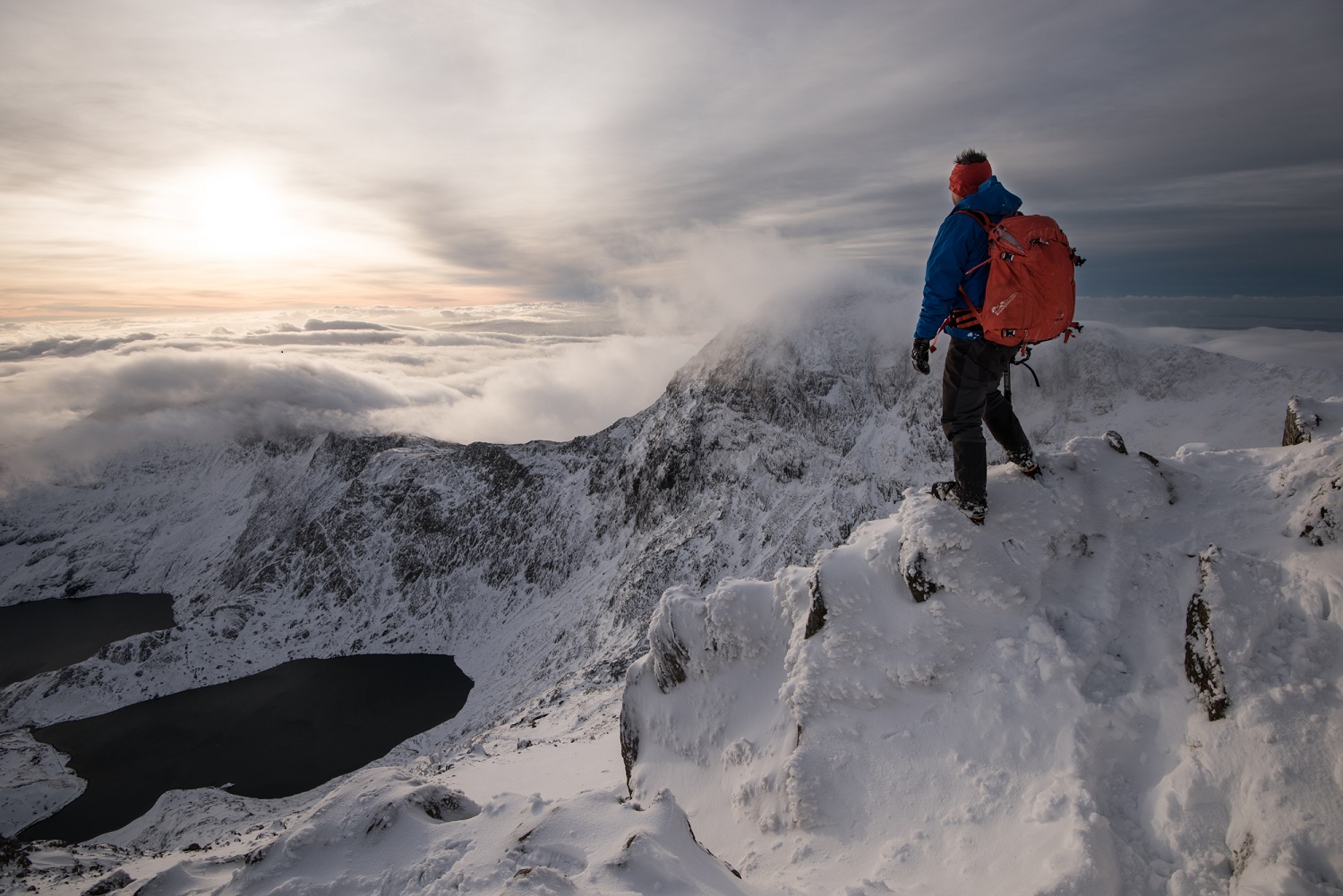
The gear is in an f-stop Lotus pack combined with a Medium Slope ICU. This does for most day trips, whether in the hills, shooting mountain biking events or bouldering trips out. A Nikon D810 and a couple of lenses, a Lee filter set and a 3 Leggedthing Billy tripod is the basic set up. The future probably holds a Tilopa for extended trips and a couple more ICU’s. All supplemented by climbing gear, bikes, canoes or SUP’s or whatever the days activities call for.
Advice
Invest in Time, experience, warm gloves and comfortable boots


You may find more of Jethro's work on his web site, Facebook and Instagram.
"We Are f-stop" is for all f-stop users to share their stories from the field, from small daily adventures to epic travels. Contact us with your story on Facebook or drop us an email to [email protected] and let us know where your photography takes you and your f-stop pack!
SHOP ALL GEAR MORE WE ARE f-stop


©2022 F-stop
Discount Applied Successfully!
Your savings have been added to the cart.